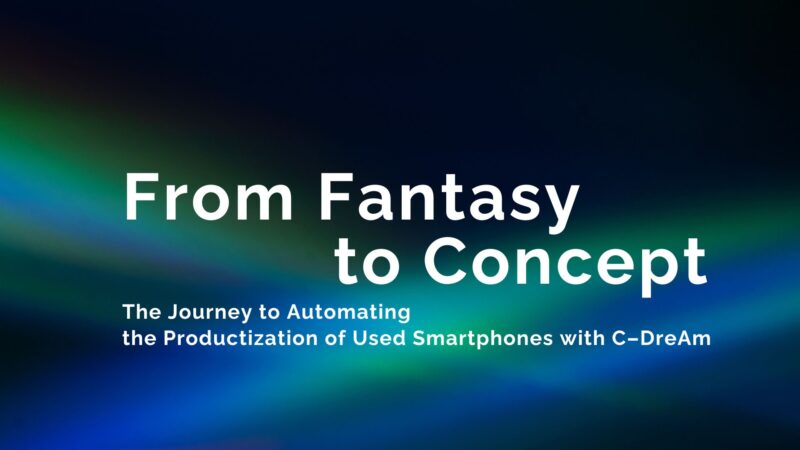Nine years after we blindly embarked on the journey of smartphone reproductization, our long-awaited automation line for used smartphone reproductization has now begun to operate.
When we first discussed the concept that automation would be at the core of used smartphone processing, we were heavily criticized, such as “You can never put used smartphones with varying conditions onto an automated line.”, “It’s impossible.”
Along with the large amount of funding required to build the system, my “fantasy” was viewed with skepticism both inside and outside the company.
However, when the system was completed, I was genuinely happy to finally hear people around me saying, “This is a concept that’s ahead of its time.”
Hence, we decided to give it the playful name, C-DreAm, derived from the company’s abbreviation, CDREM.
All staff operating C-DreAm are required to wear white lab coats, emphasizing that we are a skill-oriented company aiming to work in a clean environment.
The reason I originally had this “fantasy” was my firm intension to show the stubbornness of small and medium-sized enterprises.
While society is widely booming about DX and AI, many large clients believe that it’s easy for subcontractors like us to respond to differences in the volume of work by using temporary staffing services and to cut costs. Thus, it’s difficult to convince them to adopt automation, which would temporarily increase costs. I suspect that many small and medium-sized subcontractors have given up on this.
Rather, it would be more likely that they be told to lower their prices if they have such surplus funds.
My initial “fantasy” was more ambitious. I wanted to build an automated system that linked not only the productization line but also product shipping. By thoroughly understanding the flow of smartphone reproductization on a per-device basis, we aimed to create a total system that could ship from the market peak prices in the volatile used smartphone market, which is similar to the fresh vegetable market, by interpreting market fluctuations. However, due to budget constraints, we had to stop there.
It’s truly regrettable.
The reason we’re focusing on automation now is that we strongly felt that we would not be able to construct an efficient line incorporating on-site know-how unless we tackled the automation concept while our site was healthy active and generating new ideas.
Usually, businesses tend to start scrambling to adopt automation when they’re on a downward slope, and on-site know-how is leaking out. However, that just ends up in a mechanized line without any competitive edge.
This time, we intended to incorporate fresh, sharp know-how into automation. Especially for cosmetic inspections, we’ve introduced AI to ensure consistent and accurate results.
Still, the journey wasn’t easy.
After we started full-scale work, we got hit with the coronavirus pandemic. We had trouble going back and forth and communicating with our technical alliance partner in Finland. The project, which was initially supposed to be completed in a year and a half, took nearly four years, and we ended up having to do almost all of the development in-house.
As a result, our members’ skill have grown unexpectedly, which was an unintended positive outcome. I am truly grateful to the employee who took charge of the system.
Just as our automation machine C-DreAm was completed, the world started facing serious labor shortages. I think all the places that were accepting this job just relying on low labor costs are rapidly getting into trouble.
My company is no exception, and we are directly hit by this wave. However, we want to bring our automation machine C-DreAm up to speed quickly, improve productivity in the used processing industry, cope with the labor shortage, and bring a fresh wind to the industry.
More precisely, we want to free the people on-site from tedious repetitive work and have them take on more high-value-added tasks.
What will happen next? I want this to be recognized in public as a concept.
